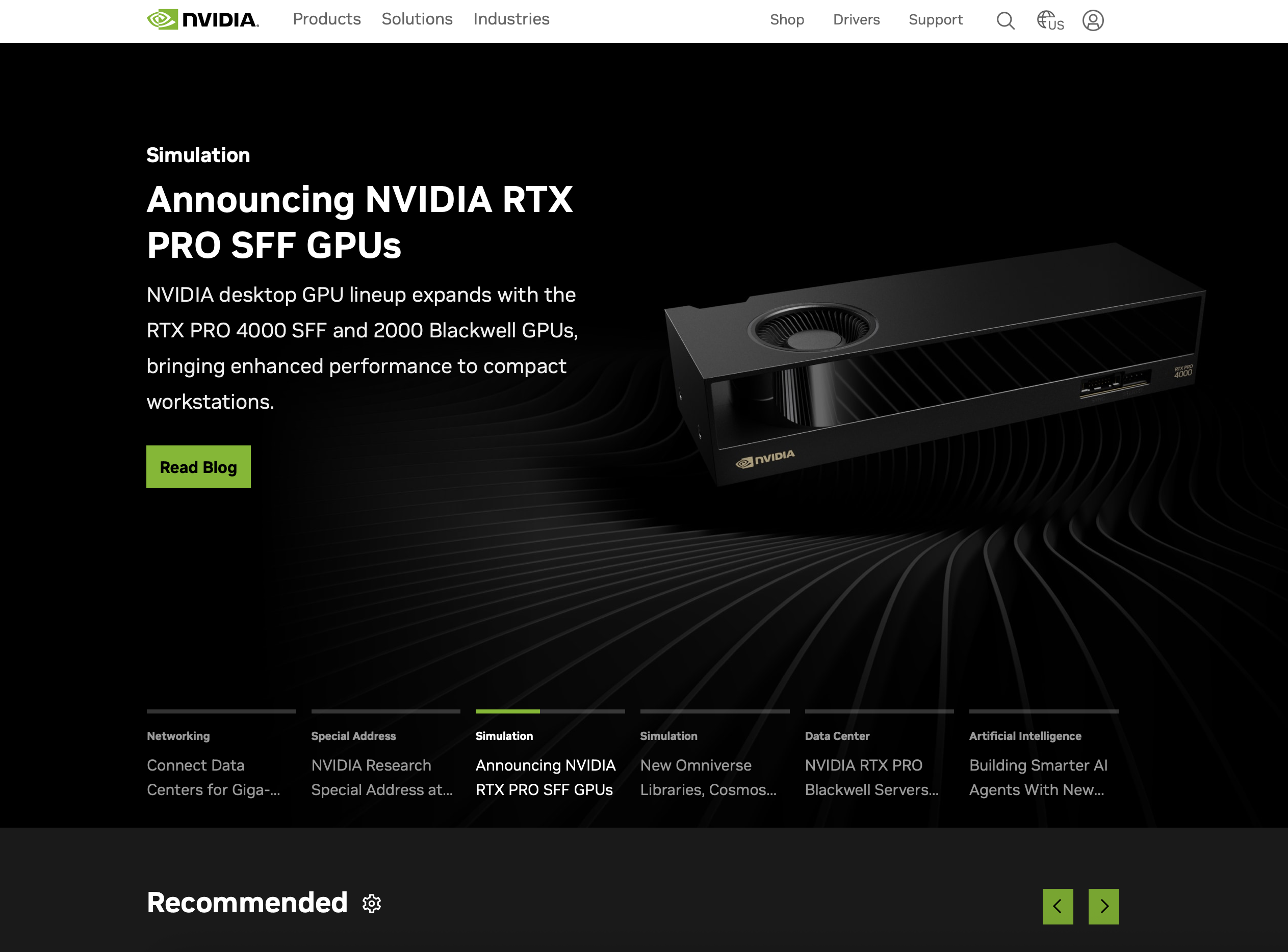NVIDIA
AI InfrastructureLeading provider of AI computing infrastructure, GPUs, and accelerated computing platforms.

NVIDIA company profile
Overview
NVIDIA has transformed from a graphics company into the undisputed leader of AI computing infrastructure. What started as a company focused on 3D graphics for gaming has evolved into the essential hardware foundation powering the artificial intelligence revolution.
The company’s graphics processing units (GPUs) have become the de facto standard for training large AI models, from the original transformer architectures to today’s massive language models like GPT-4 and Claude. NVIDIA’s market capitalization crossing $1 trillion in 2023 reflects its central role in the AI boom.
AI Computing Leadership
The GPU Advantage
While CPUs excel at sequential processing, GPUs are designed for parallel computation—making them ideal for the matrix operations that drive machine learning. NVIDIA’s CUDA programming platform, introduced in 2006, made GPUs accessible to researchers and developers beyond graphics applications.
Market Dominance
NVIDIA controls approximately 80-95% of the market for AI training chips, with their products powering:
- Major AI research labs (OpenAI, Google, Meta, Microsoft)
- Cloud computing platforms (AWS, Azure, Google Cloud)
- Enterprise AI deployments across industries
- Academic research institutions worldwide
Product Portfolio
Data Center and AI
| Product | Launch Year | Key Features | Primary Use Case |
|---|---|---|---|
| H100 Tensor Core | 2022 | Transformer Engine, 80GB HBM3 | Large Language Model Training |
| A100 Tensor Core | 2020 | Multi-Instance GPU, 80GB HBM2e | AI Training and Inference |
| V100 Tensor Core | 2017 | First Tensor Core GPU | Deep Learning Research |
| A40 | 2020 | 48GB GDDR6, PCIe | Professional AI Workstations |
| L40S | 2023 | 48GB GDDR6, Ada Lovelace | Generative AI and Graphics |
Software and Platforms
CUDA Ecosystem: The foundation that makes NVIDIA GPUs programmable for AI workloads, with extensive libraries for machine learning frameworks.
NVIDIA Omniverse: Collaboration platform for 3D content creation that leverages AI for real-time rendering and simulation.
NVIDIA Drive: Autonomous vehicle computing platform combining AI inference capabilities with safety-critical systems.
Market Position
The AI Infrastructure Stack
NVIDIA has built a comprehensive ecosystem spanning:
Hardware Layer: GPUs, networking (Mellanox acquisition), and complete systems Software Layer: CUDA, cuDNN, TensorRT, and AI frameworks Cloud Services: NVIDIA Cloud Services and partnerships with all major cloud providers Developer Tools: Complete toolkit for AI development and deployment
Competitive Landscape
While competitors like AMD, Intel, and Google (TPUs) offer alternatives, NVIDIA’s combination of hardware performance, software ecosystem, and developer mindshare creates significant switching costs.
Supply Chain and Manufacturing
The company relies on TSMC for advanced chip manufacturing, creating both opportunities and vulnerabilities in the global semiconductor supply chain.
Economic Impact
The AI Gold Rush
NVIDIA’s data center revenue grew from $2.9 billion in 2020 to over $47 billion in 2023, driven almost entirely by AI demand. The company’s GPUs have become as essential to AI companies as oil rigs to petroleum companies.
Enabling the AI Ecosystem
By providing the computational foundation for AI development, NVIDIA enables thousands of companies and researchers to build AI applications across industries:
- Healthcare AI for drug discovery and diagnostics
- Autonomous vehicles and robotics
- Financial services risk modeling and fraud detection
- Content creation and entertainment
Future Vision
Next-Generation Architecture
NVIDIA continues pushing the boundaries of AI compute with developments in:
- Grace CPU: ARM-based processors designed for AI workloads
- Hopper Architecture: Optimized for transformer models and large-scale AI
- Quantum Computing: Research into quantum-classical hybrid systems
Democratizing AI
The company’s strategy extends beyond high-end data center products to making AI accessible through:
- Edge AI platforms for deployment at scale
- Developer tools and educational resources
- Cloud partnerships that reduce barriers to AI adoption
Sustainable Computing
As AI energy consumption grows, NVIDIA focuses on efficiency improvements:
- Performance per watt optimizations
- Liquid cooling solutions for data centers
- Carbon-neutral operations commitments
NVIDIA’s position at the intersection of hardware, software, and AI applications makes it uniquely positioned to benefit from and shape the continued evolution of artificial intelligence. Their platforms don’t just enable AI—they define what’s possible in the field.
